NEWFOUNDLAND-LABRADOR
Beautiful Scenery, UGLY ROADS!
This is an interesting province of Canada. The island of Newfoundland and the land of Labrador are
one province. The total population is about 530,000 with about 30,000 of them on Labrador. It is not
clear to us why Labrador is part of Newfoundland and not part of Quebec province but that will be for
another time.
First off ... you have to learn how to pronounce the name of the island of Newfoundland. It is
"newf-n-land" with the accent on "land". One of the locals told us to say
"understand newfoundland" and if it all rhymes you are probably saying it correctly.
This is really a land of small fishing villages along the coast of an island that
is solid rock. That is all that is left after the glaciers shaved it. There is some soil
on the top of the rock but for the most part it is difficult farming country. The main industry used to
be cod fishing but most of the cod have been fished out. This is a political "hot potato" and we won't
get in to that discussion. We heard a lot of different versions from many different people but the bottom
line is that there are some very poor areas and a lot of people trying to learn a different way of life after
generations of knowing only how to fish for cod.
The people are truly friendly. Most places they don't lock their houses and leave the keys
in their cars. We stopped in a village on Labrador for lunch and our bus driver
wanted to go to the top of a hill across the bay so he asked a local if he could
use his truck and was told "sure, I won't be needing it for awhile".
The roads here are truly UGLY. There is one that is good most of the time and that
is the TCH (Trans Canadian Highway). But that doesn't take you to many of the
places that you want to see. So, like in Alaska, you just slow down to 40-45 mph
and take a little longer to get there. Of course, if you are driving in the early
morning or late evening, that is a good idea anyway because of the moose that like
to browse on the good roadside vegetation. On one of our early morning bus rides we saw
58 moose in about 50 kilometers (30 miles).
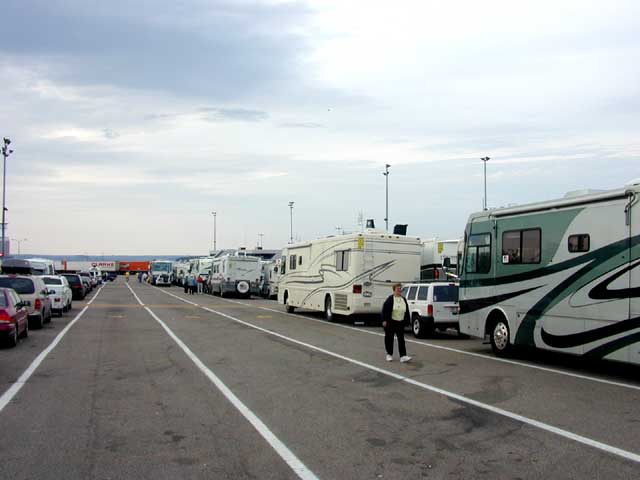
TO NEWFOUNDLAND
Here we are sitting in line waiting to load onto the Newfoundland Ferry. It will
take us about five hours to get there from Nova Scotia and then unload and head for our campground.
It is a cool and overcast morning in North Sydney and it will be foggy when we get
to Port Aux Basques. Then a short run to our campground. So far we have not outrun
our access to the internet and even our sat TV is still working.
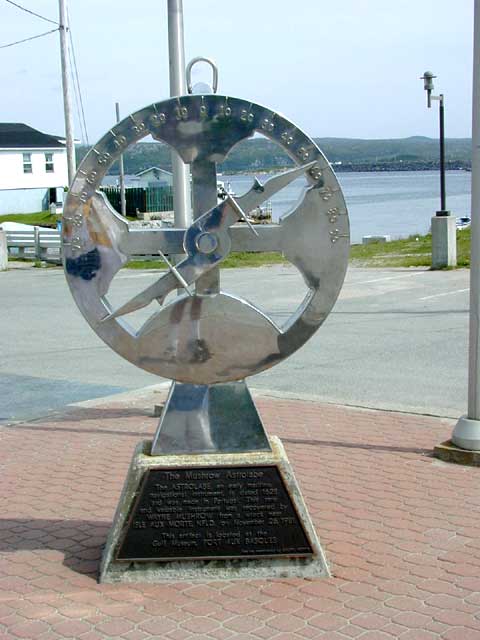
PORT AUX BASQUES
Port Aux Basques is the Newfoundland port where our ferry arrived. It has a very
interesting maritime museum that contains two very old and valuable astrolabs. These
were discovered nearby, while diving on a very old wreck. They were made in
Portugal around 1628 and were recovered in 1981.
An astrolab was the predecessor to the sextant. And, like a sextant, it was used to
measure the elevation of a star in the sky. However, it was not as accurate, since
it was dangled from a swivel held in the hand as the user sighted through holes on a
rotating bar. When the holes lined up on an object being observed, the pointer on the
end of the bar was used to read the angle of elevation. When used on the North Star it
provided a good estimate of a latitude.
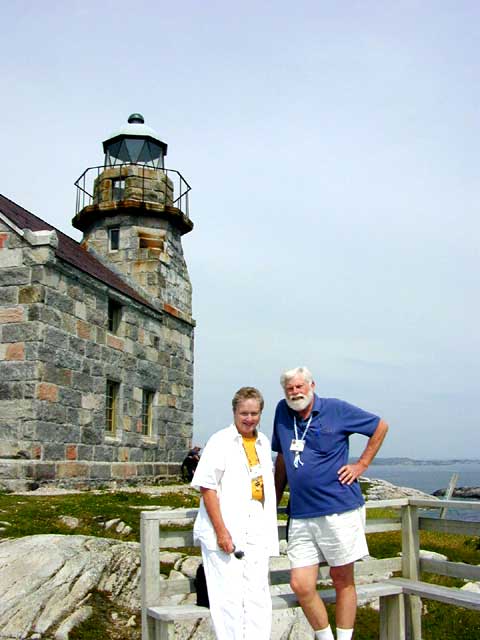
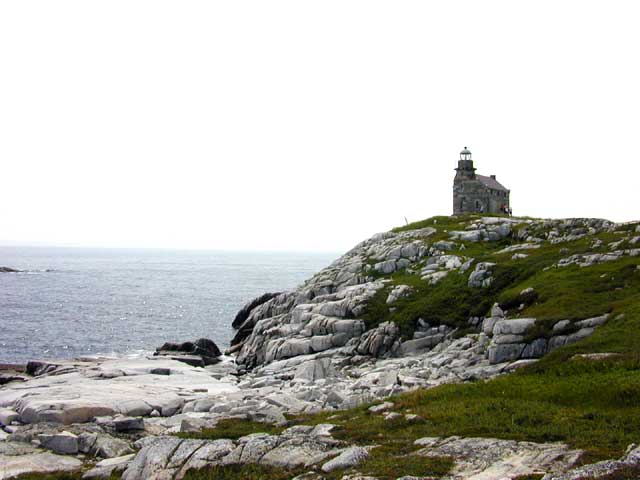
ROSE BLANCHE
This is just one of the many lighthouses we visited. They are mostly of historical use now. Every
boat worth anything at all has at least one GPS unit and a lot of technological help on board so
the lights aren't used much any more. This is built of granite and has stood for 130 years. It is
quite nicely restored and was fun to go through.
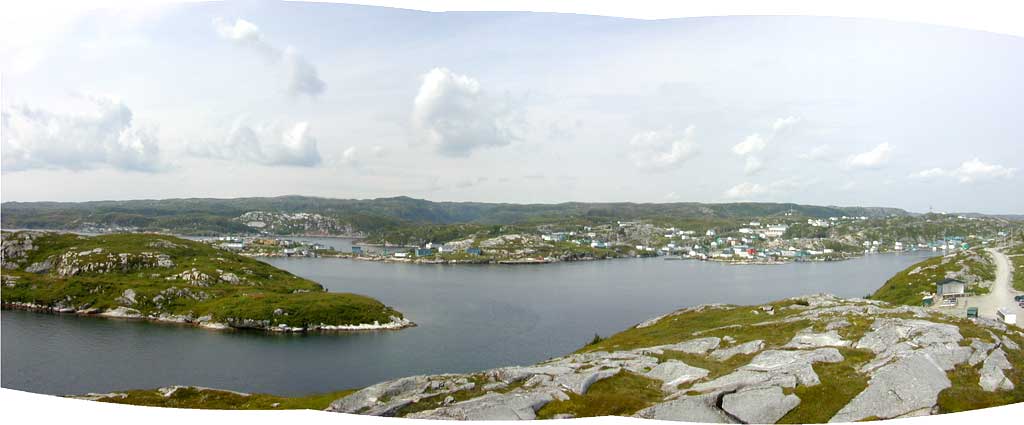
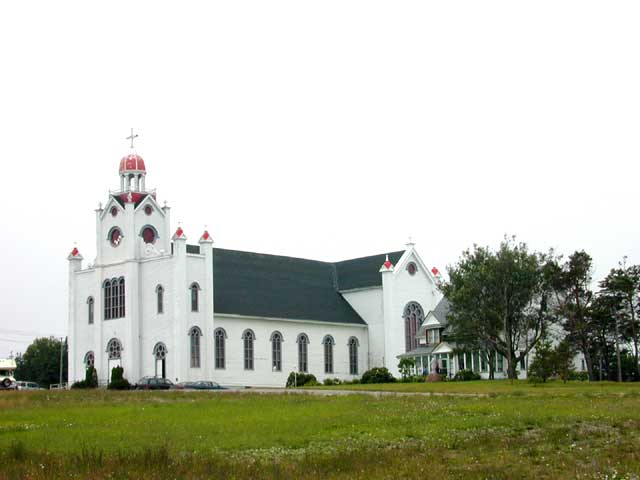
OUR LADY OF MERCY
In Port aux Port is this wonderful Catholic Church named Our Lady of Mercy. Not shown are
14 stations of the cross carved out of Carrera marble and framed with Travantine marble. We particularly
liked the reproduction of the Last Supper painted on the front of the altar. Quite unique.
It is also the largest all-wooden structure in Newfoundland.
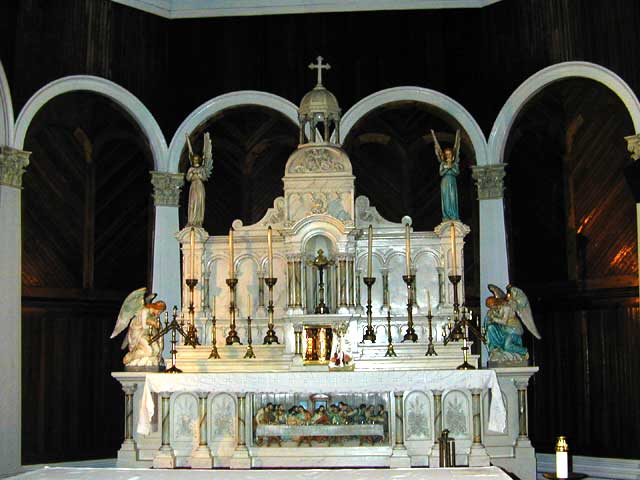
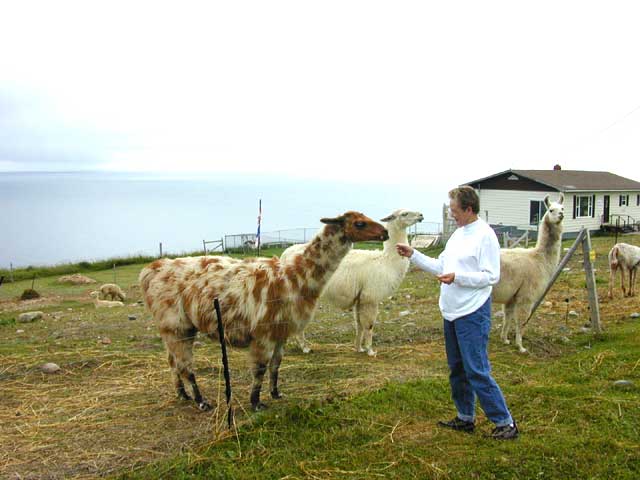
NEWFOUNDLAND ALPACA
Feeding an alpaca! Who would have thought it would happen. Actually they apparently love
clover which just happens to be growing just outside of their fence. It is a treat for them and
they are very gentle about taking it out of your hand.
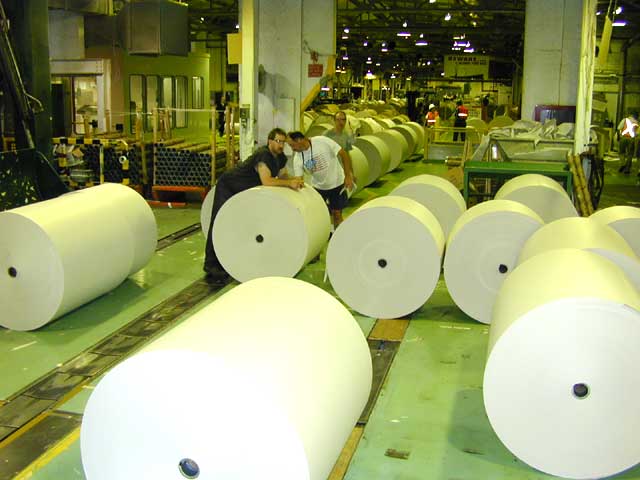
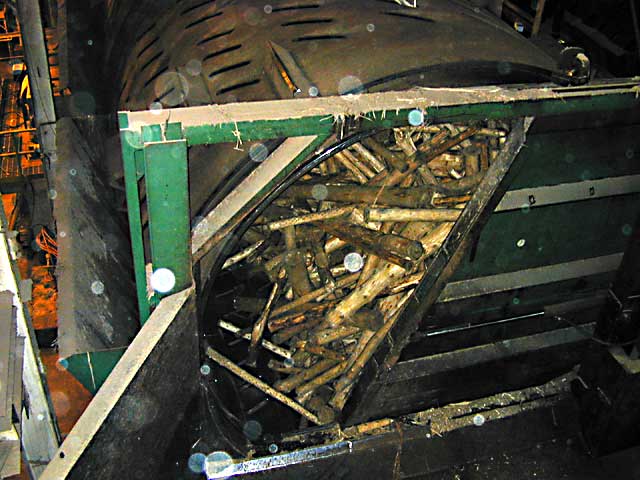
CORNER BROOK
Had a tour of a pulp and paper mill. This is a large plant in Corner Brook that supplies newspaper
for many U.S. publishers. It starts with the whole log going into the tumbling process and voila - out the
other end comes the paper ready to be shipped. Was quite a fascinating tour.
ARCHES
This was just a pretty stop along the road. The formation is called - of course - the Arches. The
rock has been worn away over the millenia and will eventually collapse. But I don't think it will
happen in our lifetime.
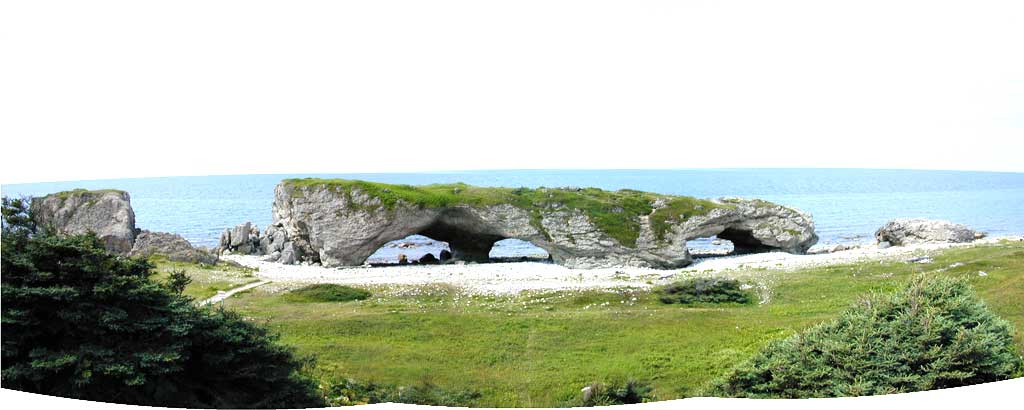
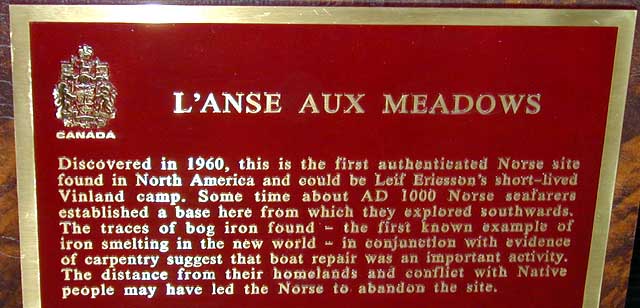
L'ANSE AUX MEADOWS
This has been designated as a World Heritage Site by UNESCO to try and protect it for the
benefit of all.
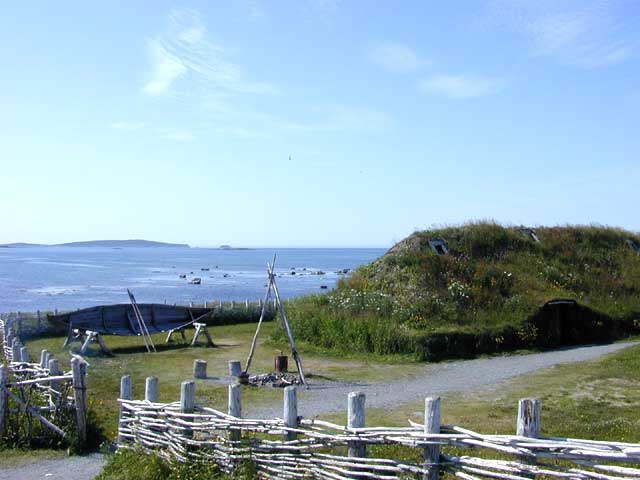
VIKING VILLAGE
This village was one of our favorite things on the trip. There were three "houses" that
had been restored. In each one of them a character was discussing his or her life as it might have been
when the Vikings were here in about 1000 A.D. They stayed in character throughout and really were able to
share a lot of what it might have been like to live at that time.
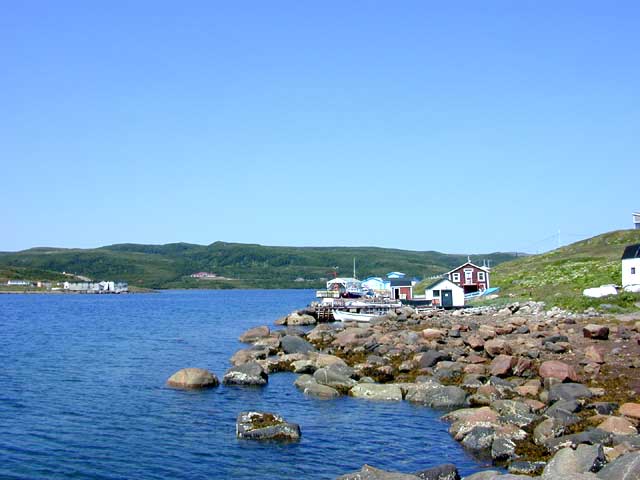
RED BAY, LABRADOR
This is typical of a fishing village in Labrador. It is quite small - the population
of Red Bay is 300. They make their living now catching lobster and crab and of course
tourism contributes some. At every stop there was a craft and/or gift shop that carried
local crafts.
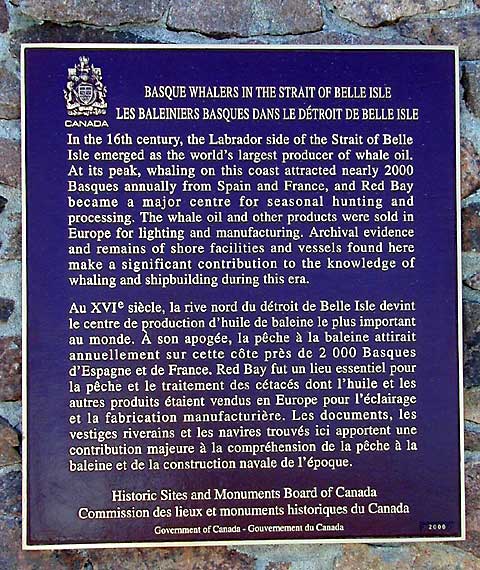
WHALING
The Basques traveled here every summer for about 100 years. Early in the 1600's they
stopped coming. Some believe the reason is they took so many whales so easily that they
fished out the area. The right whale (named because it was the right whale to catch) is
quite slow moving, yields a high blubber content and is quite easy to harpoon.
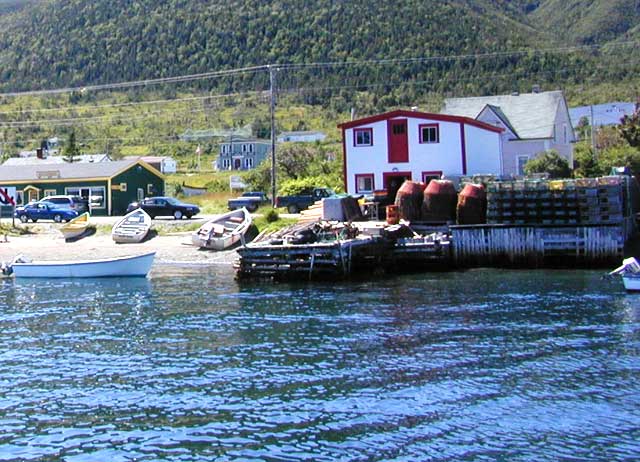
LOBSTER and CRAB POTS
This is currently not the season for lobster and crab so the pots are stored on shore
ready to be used for the next season. The crab pots are the red round ones. The crab crawl up the
sides to get at the bait down in the center. There is a plastic funnel inside the top and once they get
down to the bait they can't crawl out again. With the lobsters there are two areas and again going after
some bait in the trap, they are led into an area where there is no exit for them. The shape of them is
difficult to see but they are shaped like a small quonset hut with the entry at one end.
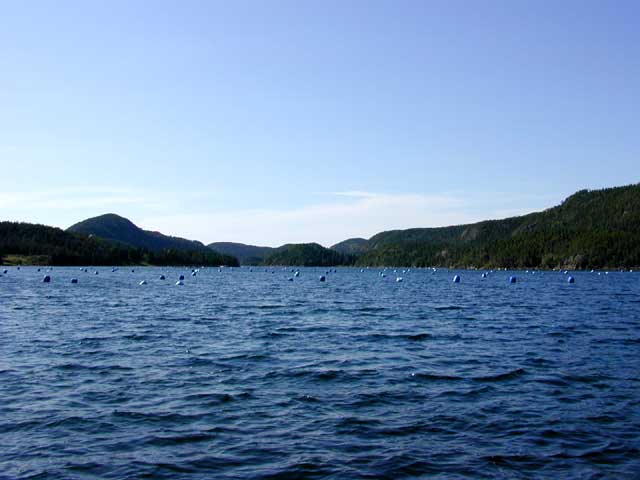
MUSSEL AQUACULTURE
This is a new industry that is trying to replace some of the cod fishing. There are long lines attached
to the shore and then shorter lines attached under each of the buoys in the picture. The mussels are
growing on these shorter lines.
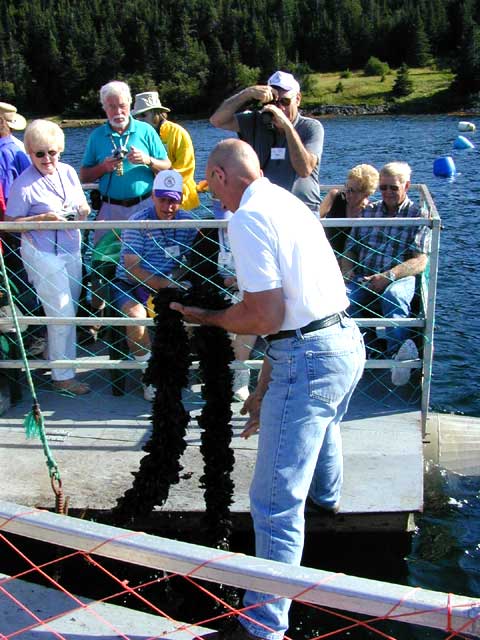
GROWING MUSSELS
This is what one of the shorter lines looks like with the mussels attached. It takes several years for
the mussels to mature but it seems like it will be a successful industry. Both of us tried the mussels
and only one of us liked them. But we now are entitled to an opinion since they were sampled.
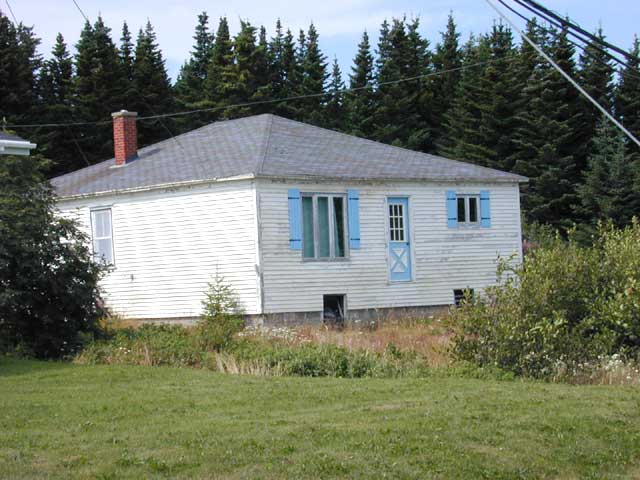
MOTHER-IN-LAW DOORS
This is not the most extreme example that we encountered but it was one that we could
get a picture of. We saw some that were more than 15 feet above the ground. After querying
several of our guides and locals too we couldn't come up with a reasonable explanation. One answer
was that the taxes are less if they don't finish the house. Another one was that they just hadn't
gotten around to adding the porch. And another one was that they had another door in the back. What
we couldn't figure out was why the door was put in there at all if it wasn't going to be used. In any
case it is called a mother-in-law door because that is the door that she was supposed to use if you didn't
like her!
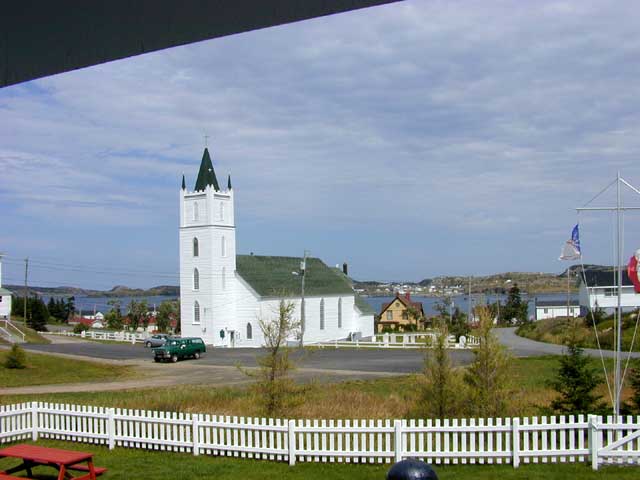
PRETTY CHURCH
Religion plays a major role in the lives of these people. The vast majority of the churches are in
wonderful repair and may not be elaborate but are well maintained and tidy. One of the most fun entertainment
that we had on this trip was done by a senior church group. They had a comedienne who had to be at least 85
and was the funniest lady we had ever heard. She had a huge repitoire of jokes in her head and told them all
deadpan - she was delightful.
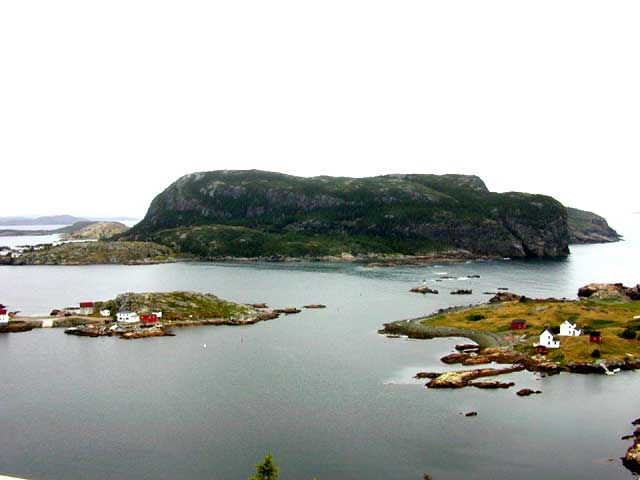
SALVAGE HARBOR
From the Round Top lookout. This is another example of an isolated fishing village. They are being
allowed to do some experimental cod fishing under government control to see how well the cod are coming
back. This is pretty isolated even for a lot of tourists but we had an interesting time driving out here. We
got to the top of this point in four-wheel drive but it was worth it for the view.
GANDER MURAL
This is a mural in the airport international lounge. It was just too beautiful not to take a picture of
it. It was painted about 40 years ago and has never been touched up. The artist used birds as symbolic of
airplanes and of course you all will recognize Queen Elizabeth II in the far right!
This airport played a vital role in the 9/11 aftermath. It was one of the main diversion
sites for flights that were bound for the US when its airspace was closed. Many of the
people ended up camping out under this mural. Others were taken in by the people of
Gander in there own homes.
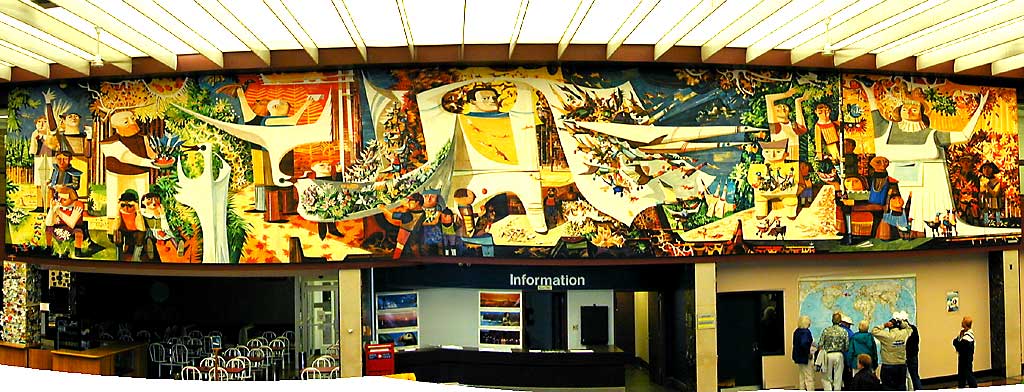
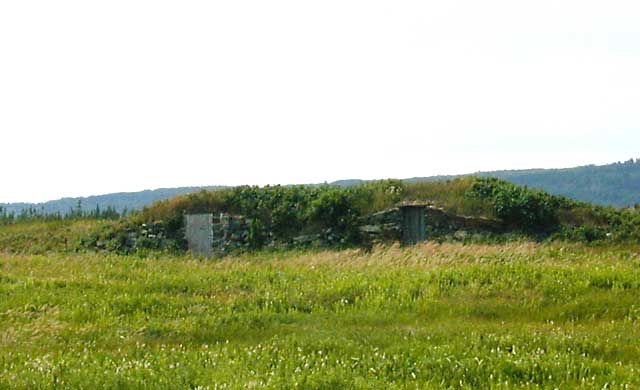
ROOT CELLERS
This is something that everyone should know. Elliston, Newfoundland, it the root cellar capital of the
world and they have a plaque to prove it. Did take a picture of it but the words didn't show up too well. They
have more that 130 root cellars including one that was built in 1839 and it still in use. The winters are so brutal
here that the root crops had to be stored this way. They were usually built into a hillside with the door facing
east because here the winter east winds are usually frost free.
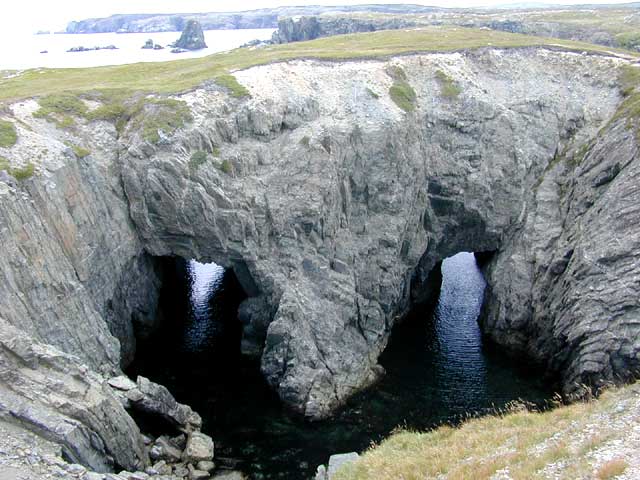
DUNGEON
Don't know why they gave it this name but it is a beautiful formation. We were
there on a calm day but Cape Bonavista can be very treacherous.
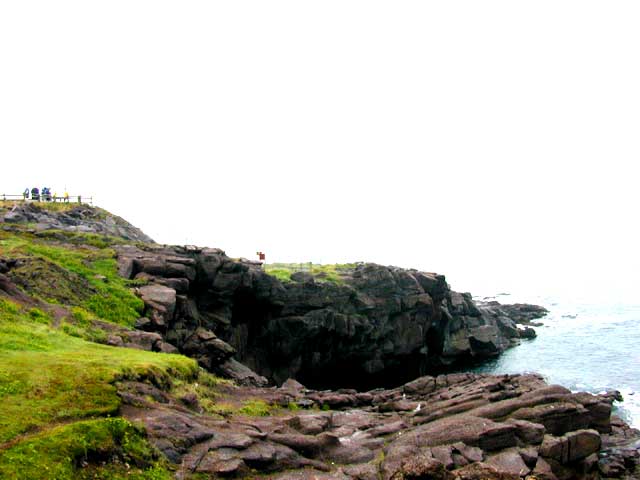
CAPE SPEAR
The most easterly land on the North American continent at 47.52 N Latitude and
52.62 W Longitude. Now we can say that "been there, done that, didn't get the t-shirt!"
In fact, we got rained on all the time we were out there on the point. It is near
St. Johns.
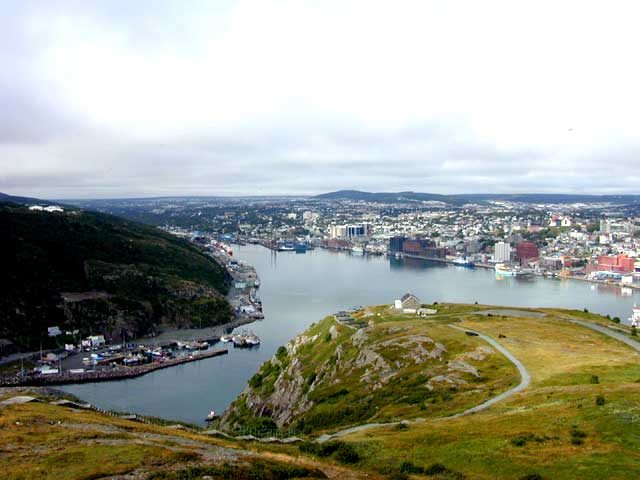
ST. JOHNS
St. Johns is by far the largest city on Newfoundland and also has the oldest
commercial district. It is a very sheltered harbor with access through a very
narrow inlet. It was a major staging area for convoys during WWII and therefore
had a pack of U-boats that were always laying in wait outside the harbor mouth.
One U-boat even tried to shoot two torpedoes through the inlet into the harbor.
They exploded when they hit the side of the narrow inlet. It would be very unlikely
that you could send one of those WWII torpedoes through the inlet and I guess it
did not make sense to waste them trying.
Had a fun time at a real Irish pub here. Food was just like in Ireland and the
Guiness was as good as it could be outside of Dublin.
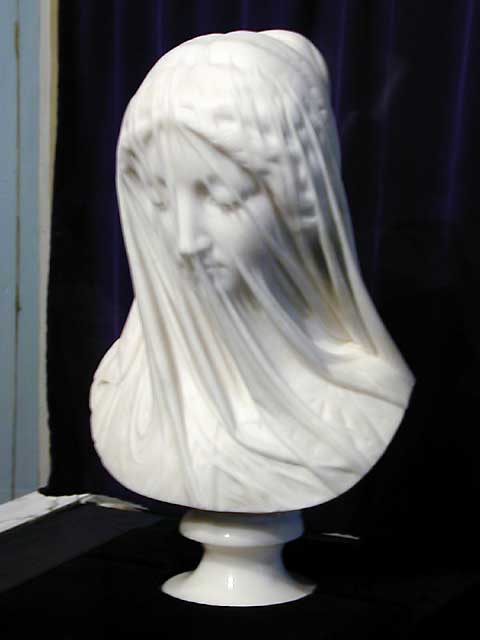
VEILED VIRGIN
After the tour of St. Johns church we were invited into the residence of the order of the sisters -
can't remember the name of their order. Inside their home is this beautiful bust. It was a gift
to their order. We have seen one quite similar to this in Europe but this is another beautiful
example. It is all done in Carrera marble. Just unbelieveable that you could do such a thing in stone.



























